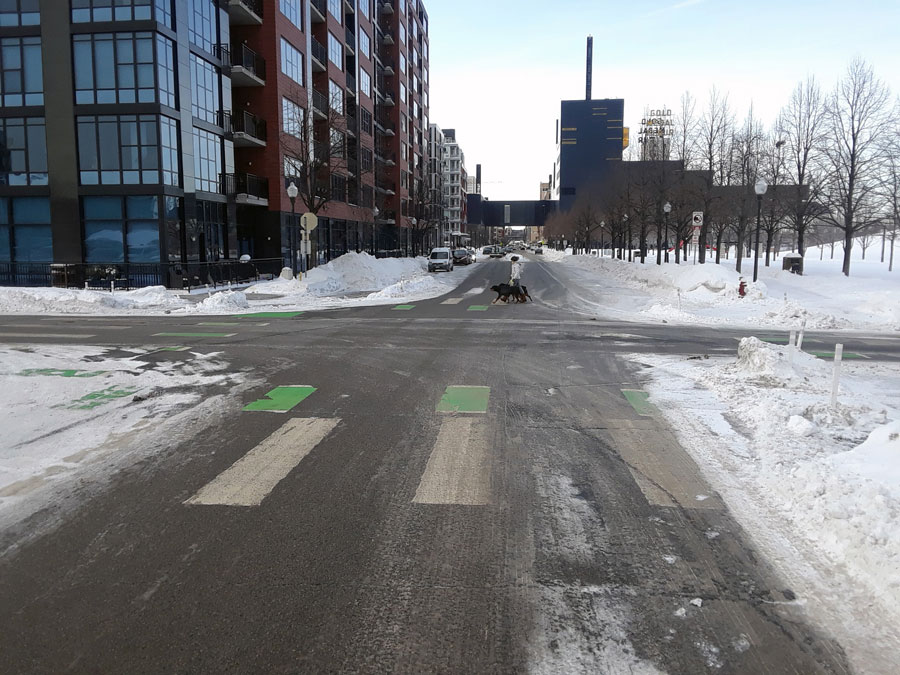Strategy 4 Enhance intersection design and safety during the buildout of the All Ages and Abilities Network.
The actions within this strategy are divided into two categories:
Action we will DOActions we will SUPPORTAction we will do are followed by “DO” and are colored in dark gray, and actions we will support are followed by “SUPPORT” and are colored in light gray.
Learn more about how we get thereMinneapolis crash data shows that 80% of bicycle crashes happen at an intersection – 48% at signalized intersections and 32% at stop signs.1 Focusing design strategies on the intersection to minimize exposure and risk from vehicles is key to improving safety and comfort for bicyclists. An added benefit is that improved conditions for bicyclists tends to increase comfort, reduce crossing distances, and improve visibility for pedestrians. A key focus of this strategy is building protected intersections. Protected intersections better protect bicyclists travelling through the intersection through the inclusion of design treatments like vertical separation elements and turning wedges.
Actions to enhance intersection design and safety during the buildout of the All Ages and Abilities Network.
Bicycling 4.1
Build protected intersections along the entire bikeway network, prioritizing the All Ages and Abilities Network and High Injury Streets as identified in the Vision Zero Action Plan.
Supported goals:
Safety Mobility
Related actions:
Difficulty:
High
Timeframe:
2020-2023 (Years 0-3)
Status:
On-going
Bicycling 4.2
Build median islands, curb extensions, raised crossings, signals and/or reduce the number of travel lanes along the All Ages and Abilities Network on crossings of any street types other than low volume residential streets.
Supported goals:
Safety Mobility
Related actions:
Bicycles 8.2
Difficulty:
High
Timeframe:
2020-2023 (Years 0-3)
Status:
On-going
Bicycling 4.3
Install transit islands where appropriate to ensure compatibility of protected bikeways, transit operations, and people walking, with careful consideration for accessibility.
Supported goals:
Safety Equity Mobility
Related actions:
Design 5.1, Design 5.2, Design 5.3
Difficulty:
High
Timeframe:
2020-2023 (Years 0-3)
Status:
On-going

